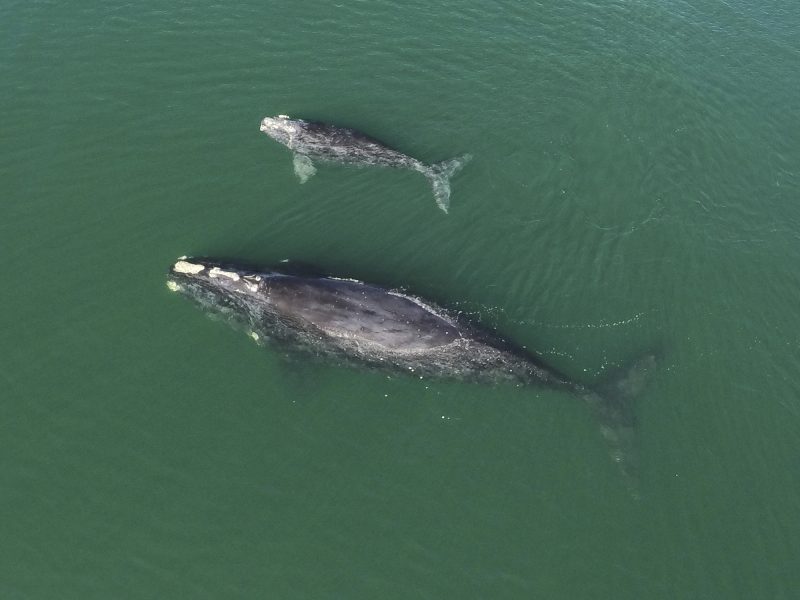
Sea of pathos: Endangered right whale gives birth entangled in fishing rope

Scientists spotted an endangered right whale, dragging a length of fishing rope caught in its mouth as it swam with a newborn calf off the Georgia coast, a rare confirmation of a birth by an entangled whale that experts determined they cannot safely attempt to help.
“The baby whale appeared healthy and uninjured when an aerial survey team spotted it Thursday alongside its ensnared mother near Cumberland Island, Georgia,” said Clay George, a wildlife biologist with the Georgia Department of Natural Resources.
[The right whale gets its name because it was the right whale to hunt—it moved slowly and would float after being killed].
It was the second new-born right whale confirmed in the Atlantic waters of the Southeastern US, during the species calving season that typically runs from December through March.
North Atlantic right whales are critically endangered, with scientists estimating that fewer than 350 survive. Adult females migrate to warmer waters off Georgia and Florida each winter to give birth. George said that he is only aware of one other confirmed report, from January 2011, of an entangled right whale being seen with a newborn, and that one ultimately managed to free itself.
The female whale spotted last week, identified by the unique markings on its head, has been dragging fishing rope at least since March. That was when it was first reported entangled in Cape Cod Bay, off the coast of Massachusetts. Wildlife experts managed to shorten the rope before the whale headed south, but were not able to free it.
Also read: The case for ocean optimism
“We haven’t seen a chronically entangled whale come down here from up north and have a calf,” George said, adding: “It’s amazing. But on the other hand, it could ultimately be a death sentence for her.”
“That is because the mother whale may struggle both to nurse her calf and still have the energy needed to keep dragging the fishing line while also trying to recover from potential injuries to its mouth,” George said.
Female right whales typically gorge themselves in the waters, where they feed and mate, off New England and Canada, before heading south to give birth. They won’t eat again until they return a round trip that can take three months or longer.
Trained responders in a boat approached the mother whale and calf on Thursday. George said that after consulting with other experts, the response team concluded any attempt to remove or further shorten the fishing rope would pose too great a risk to both the whales and the boat crew.
Spotters who scan the waters daily for whales and their babies during the calving season, plan to keep an eye out for the pair.
“My concern is she’s still got two pieces of rope, about 20 feet, coming out from the left side of her mouth,” Georgia said. “If those two pieces of rope ended up getting knotted around each other and there’s a loop, you could image that calf could end up becoming entangled,” he added.
Also read: ‘Salim Ali Bird Count’: A rare chance to know more about our feathered friends
Scientists and advocates with the North Atlantic Right Whale Consortium said in October that they suspect the marine mammals lost nearly 10 percent of their population last year, with their overall number falling to an estimated 336.
Right whales were decimated during the commercial whaling era, when they were hunted for their oil. Now scientists say entanglement with fishing gear and collisions with ships are killing right whales faster than they can reproduce.


